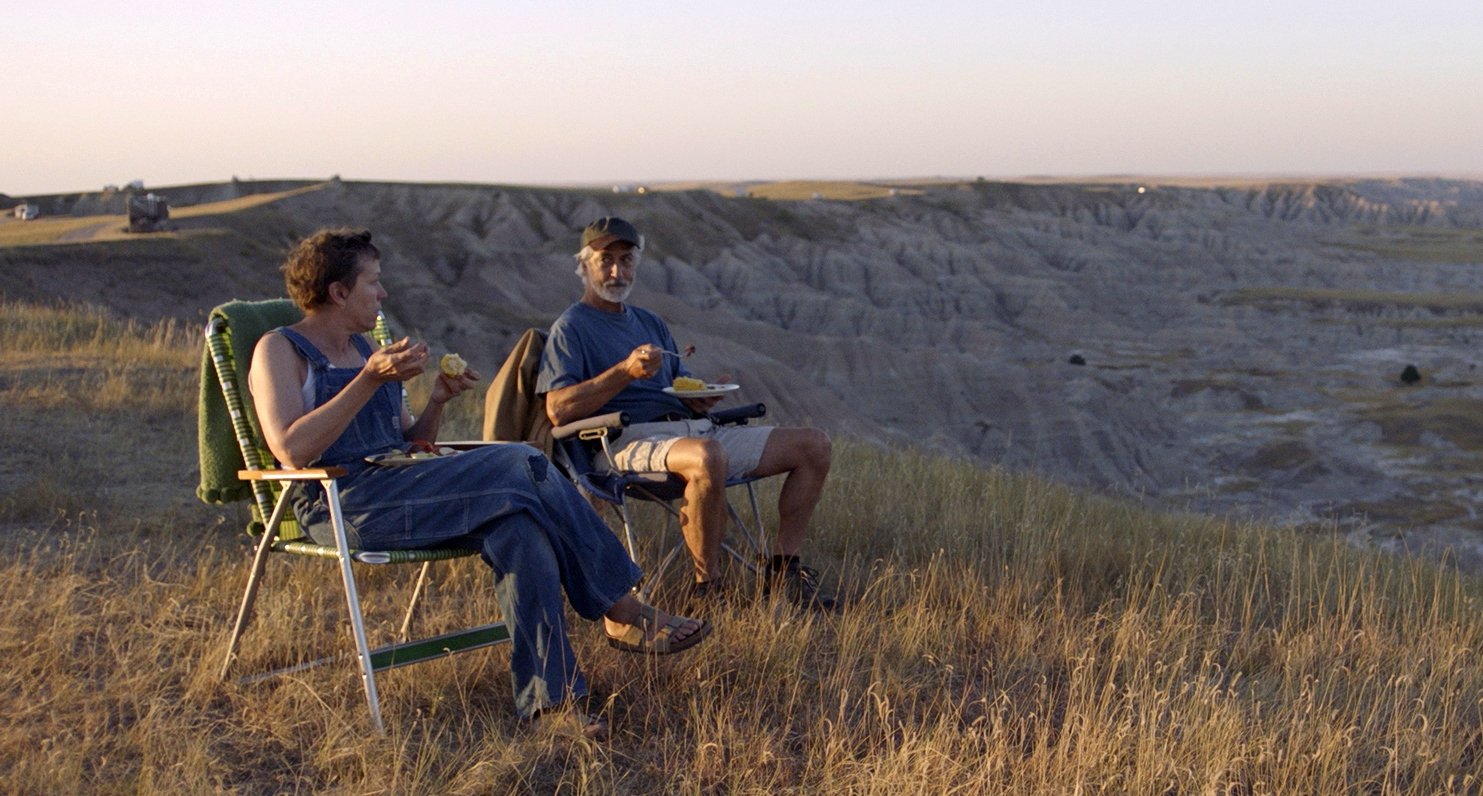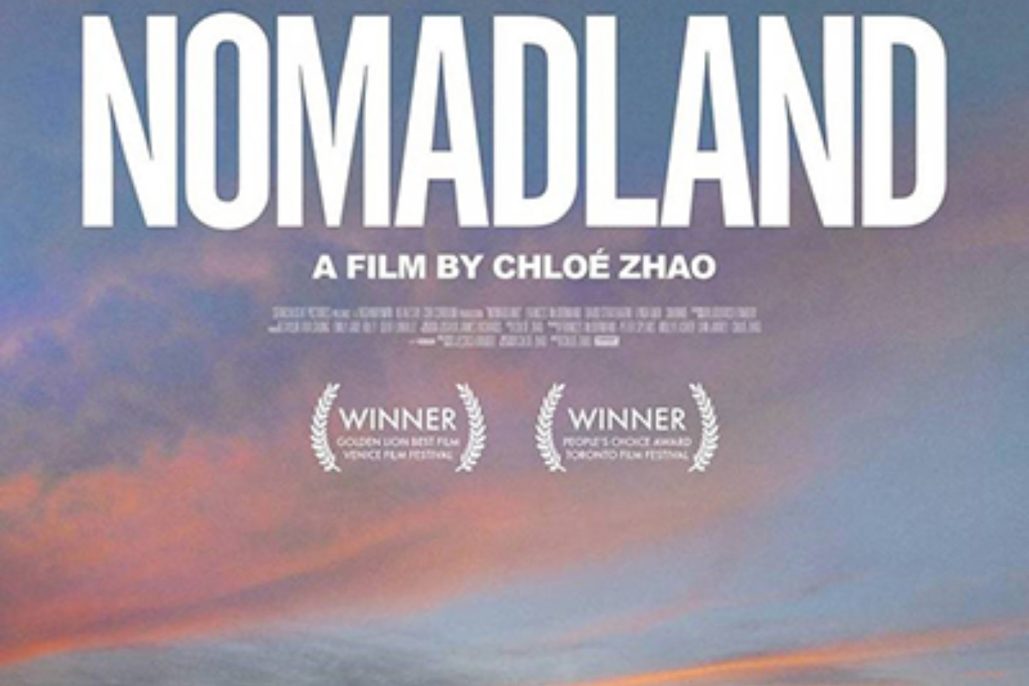by Susan Chang
語言:
English
Photo Credit: Film poster
NOMADLAND, a film that won Chloé Zhao an Oscar for Best Director, is a film that follows a woman named Fern who takes seasonal jobs to make ends meet as she drives across the country in her minivan after her husband’s death. Fern and her husband used to work for the US Gypsum Company in Empire, Nevada, where they shared a company-owned flat. The US Gypsum shut down its gypsum mine and drywall plant, forcing people who lived and worked there to relocate.
The movie starts off with Fern collecting her personal objects from a warehouse to take with her on her van, including a set of beloved plates given by her father. Here Zhao skillfully enacts Chekhov’s gun, in which we will see how the plates come to be part of Fern’s own self-reckoning.

Film Still
Through the usage of natural lighting, Zhao captures a realistic view of the American West. Sometimes the film looks like a documentary of actual nomads more than anything else, despite Zhao saying in an interview, “I’m a fictional filmmaker. To me, Nomadland is fictional”. Zhao assiduously creates the illusion of naturalism and highlights the lives of people who are often overlooked in movies and in society.
In the film, we see Fern’s challenges living in a van, as well as both her tough and soft sides through her interactions with various other characters who loved, cared, “betrayed” and left her. This journey of grief and healing is a pilgrimage to staying true to oneself, which is especially difficult when it goes against “societal norms”.
Her visits to her sister and Bob are both healing but only temporary. Despite them offering consolidation, they are rejecting who she was, the choices she made in the past—and the person she is now—a person longing for belonging, though not the conventional kind.
By the end of the film, we see Fern going back to the same seasonal job at Amazon, this time more optimistic and firm as she greets old and new nomads along the way. Some time later, Fern returns to the nearly abandoned town of Empire to dispose of the belongings she has been keeping in a storage unit. She visits the factory and the home she shared with her husband before returning to the road again.
While Nomadland is set in the 2011 recession, Zhao echoes Jack Kerouac’s On the Road—a novel that describes a group of moneyless young people who are in love with what freedom life can offer on a series of wild and frantic trips across the United States. In this, they disdain timetables, mortgages, pensions, and traditional American industrial value, and eschewing the norms of mainstream society. Kerouac’s work is significantly related to the Beat movement, a counter-cultural literary and artistic movement in the 1950s, and still appeals to rebellious spirits today. One can still see a similar rebellious spirit in Fern, but this one with a deeper reflection on American society.

Film Still
In the short conversation between Fern and her sister’s family, as well as her brief reunion with Bob and his family, she unwaveringly leaves without saying goodbye, Zhao stresses two conflicting romanticizations of American tradition: Homeownership and the frontier spirit. Fern’s story exposes both the frontier’s broken promise as well as the false assurance of homeownership. “Is home something you carry around with you or something within you?” she asks. This is perhaps a question to all of us on the myth of property-owning and traditional family values.
Nomadland isn’t a story about the 2011 recession, class relations in the US, or American capitalism; nor is it a film about a new kind of glamorous lifestyle celebrated as a way out of the burden of homeownership and its attendant mortgages. Neither is it a film about an old jobless woman trying to get used to her new identity.
Instead, using all this as a backdrop to Fern’s nostalgic longing for her past—a good job, a good husband and a good home that stretches into the desert, the film is more the story of an individual, who finds reconciliation and peace in her own way, in an unconventional way both like and unlike the supposed American way of living. There are many versions of “the American story” and these values sometimes contradict each other. We are all navigating this pool of values, emotions, and stories. Or as Zhao said, “We’re all heroes in our own reality. The hardest thing is staying true to yourself in a world that’s bombarding you with influences”.



